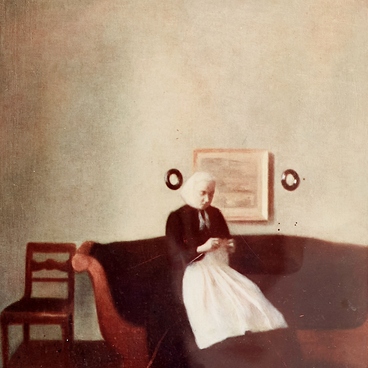Mikhail Matyushin’s principle was the harmony between man and nature. He aspired “to live the life of nature itself, to participate in it, ” hence his serious study of Impressionism and the use of Impressionist techniques.
After graduating from the Academy, Nikolay Kostrov served for three years on the Komsomolets ship in Kronstadt. His works from the “Fleet” series were exhibited at the 1930 exhibition of the Collective of Extended Observation.
In 1932, he became a member of the Union of Artists and began going on creative trips to Kazakhstan, the White Sea, the Barents Sea, and Ukraine. After the Great Patriotic War, he continued his creative trips, visiting Kirov Oblast (1958), Armenia (1961), Norway and the Danube River (1963–1964), Vologda Oblast (1971), Ukraine (1972), and Krasnodar Krai (1973). Each trip inspired a large series of works.
Nikolay Kostrov spent
almost 40 years working in the suburban settlement near the Oredezh River near
Leningrad. Until the 1930s, he was mainly known as a painter, but then he
gradually switched to the graphic arts. Starting in 1932, he illustrated
children’s books, collaborated with the Experimental Graphic Studio of the
Union of Artists, and preferred working in the techniques of color lithography,
linocut and etching.


